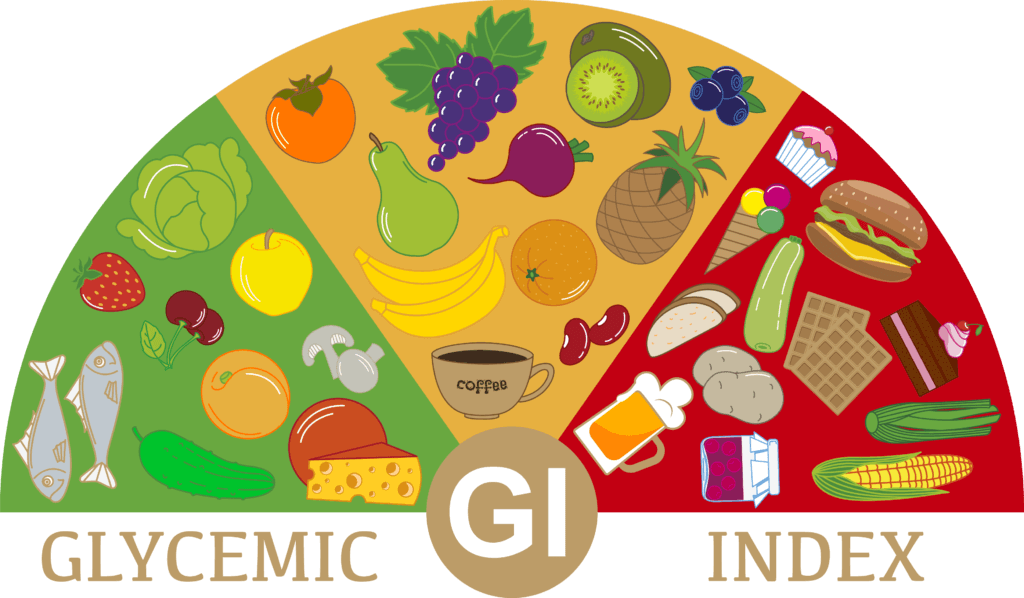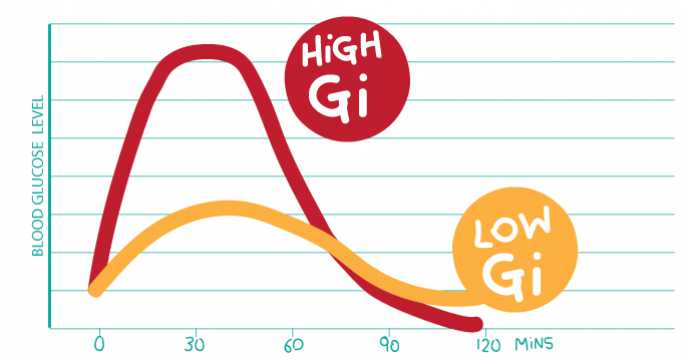The carbohydrates in food are present in various forms, such as molecules of starch or simple sugars. During digestion they are broken down into glucose (and other single sugars) so that they can be absorbed into the body.
The Glycemic index (GI) of a food is a measure of how quickly the glucose gets absorbed into the bloodstream after eating. The more quickly glucose is absorbed, the higher the level of glucose in the blood, and this gives the food a higher GI score.
Of course, most foods do not just exist as pure carbohydrate; other components are present too, including fat, protein and fibre, and these will have an effect on the GI score, as will the processing of the food and the cooking method.
Indeed, these factors can have such an impact that it is not safe to make assumptions based on the GIs of various foods. For example, both apples and apple juice have a low GI, whereas orange juice has a higher GI. Basmati rice has a lower GI than long-grain rice and broken grains of rice have a much higher GI than intact grains. White bread and brown bread have very similar GIs. With pasta, even the shape can make a difference: spaghetti has a higher GI than penne. And the temperature of the food is important too: cold potatoes have a much lower GI than hot mashed potato!
Despite some of these quirks, foods with a low GI generally tend to contain a greater amount of fibre and be less processed, so it is thought that choosing lower-GI foods is better for health; there are plenty of books and diet plans based on this principle. Low GI diets are sometimes recommended for people with diabetes, as they can help them to keep their blood glucose levels more stable, but the regime must be followed in the context of an overall balanced diet and not based solely on the GI score of each individual food. As we have seen, using the glycemic index can be misleading as GI alone does not determine whether a food is a healthy choice. High-fat foods like chocolate and pastries have a lower GI than rice or pasta, but this doesn't make them healthier.
Bottom line: A diet that consists mainly of low-GI foods can keep blood-sugar levels stable and therefore help to manage appetite and weight, and may also help to reduce the risk of type 2 diabetes and heart disease. But rather than obsessing over the GI of each food, it is better to choose wholegrains over refined grains (quinoa rather than white rice, for instance) and to eat starchy foods with more fibre (Weetabix rather than Cornflakes).


Comments
Post a Comment